By Jenn Snider
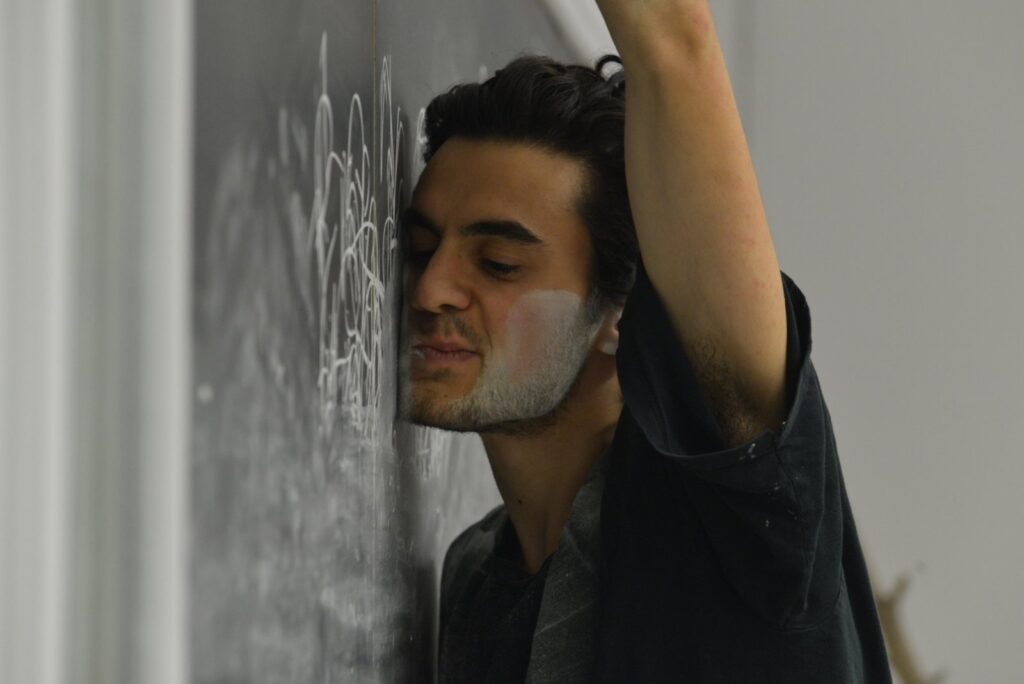
When I enter the performance space, Didier Morelli is climbing the wall, rubbing the blackboard with his face.
Morelli: “John. John. You didn’t leave me a dry eraser. I’m having to use my face.”
He is removing the remnants of John Court’s festival performance from the board. His cheeks and lips are caked white and dusty. To get the few remaining marks high on the board he jumps and hangs from the edges by his fingers, swinging left to right like a pendulum. Continuing until all the markings have been removed/have transferred to his skin, he jumps back. He seems satisfied and grabs a fresh piece of chalk from the tray and turns to John once again.
Morelli: “Can I use your chalk?”
Court: “Of course.”
Writing on the board with his left hand, Morelli scrawls in messy, barely legible scratching the names of the following iconic artworks, historic legacies, moments, people and points in time which his performance will mark. Together these make up his arena of inquiry for this piece, titled White men making white smoke: more or less:
Hans Haacke, U.S. Isolation Box, 1983
Vito Acconci, Seedbed, 1972, New York
Bruce Nauman, Walking in an Exaggerated Manner Around the Perimeter of a Square, 1967
John Baldessari, I Am Making Art, 1971
Vito Acconci, Prying, 1971
Vito Acconci, Step Piece, 1970
Marina Abramovic, The Artist is Present, 2010
Pope John Paul II, “We shall destroy the program”
Samuel Beckett (1906-1989)
Using his non-dominate hand to write out these names has already undercut their influence, and our ability to misconstrue this as any sort of honour. This is not a list of his favorite things. With a quick flip, Morelli is in a hand-stand and his feet are against the board. Holding a piece of chalk between his toes he makes new marks and skews the words’ legibility even further. Morelli’s actions may not be precise but they are still exact—his outcomes are only relevant in light of how his actions are irreverent. Morelli is strategic in his dissent.

Around the room are a variety of objects. Leaning against the wall is an uprooted tree, and within an area outlined by painter’s tape he has placed a mixture of items for work and play (including a puzzle, toy animals, an axe, and work boots), ways to clean (a small broom and paper towels), and food to eat (clementines).
Didier Morelli’s performance is four hours long, and throughout he engages his body in demonstrative feats of agility, endurance, play, and physical/psychological strength, and he spends a lot of this time alone. He stands on his hands to wipe the chalkboard with his feet. He lifts a heavy wooden box onto his chest, and then stays inside this box for over an hour. He scrawls the words ‘I Am Making Art’ in charcoal on the walls within the box which over time grows quite hot (a result of both Morelli’s activities and the heat from the single light bulb encased inside).
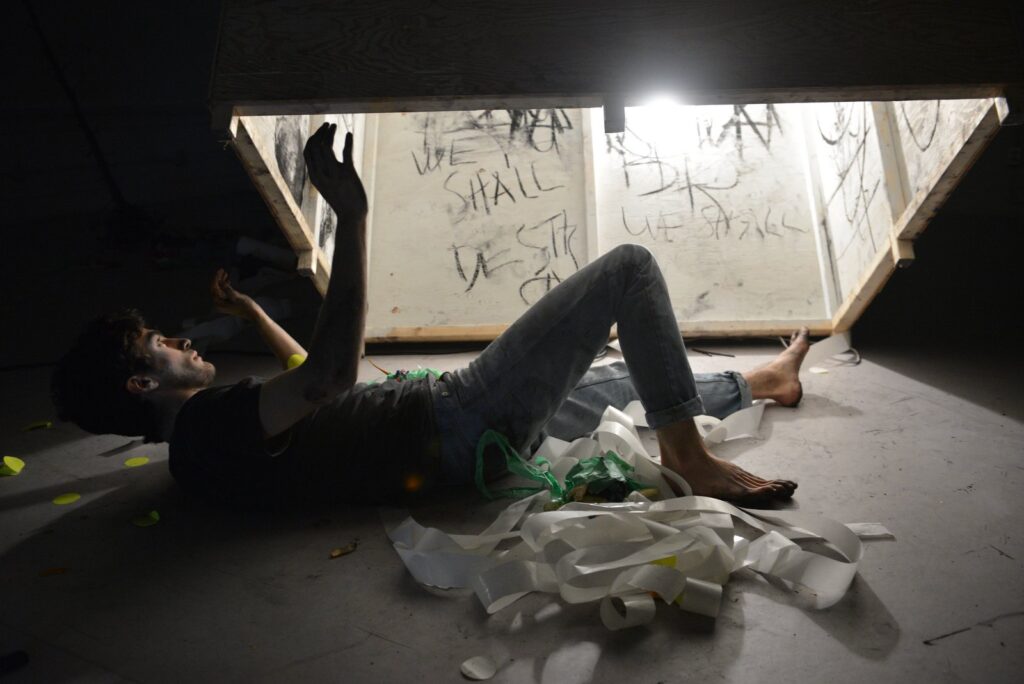
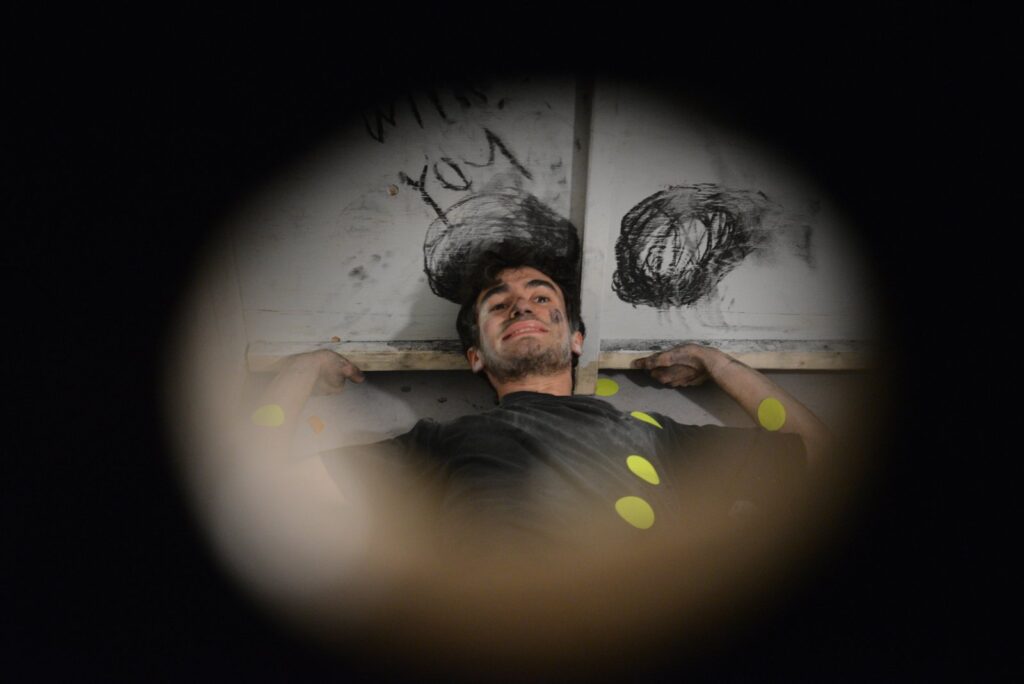
He stands on the side of his head. He sweats. He yells from inside the box at a video playing on a television outside. “We Shall Destroy… the Program!” he shouts, pushing against the walls so it lurches to and fro as though it contains a beast trying to break out. “We Shall Destroy… the Program!” he shouts again while the video of Pope John Paul II plays on a television set (I can hear sounds of the pope saying ‘wooooo, woooo’ amidst a murmur of cheers).
(…)
“Is anyone out there?”
Morelli, still in the box, is interested in eating a clementine. Asking if someone could please help him by fetching one, he reminds us he also needs it peeled since his hands are too dirty, and to please hand it to him in smaller pieces since it’s too large to fit through the holes on the side of the box. Several people oblige his request, and for a moment Morelli rests.
Morelli: “Mmmmm, these are so good.”
“Is the pope still on? I made this segment way too long…”
Morelli is interested in challenging norms. His actions in performance pose questions and offer critical perspectives on what is considered impossible, in time and in space. In this performance, Morelli is challenging certain primacies of performance art canon by demonstrating a form of absurd alternative leadership. Watching him for the first full hour, I was struck by what the images and actions conveyed about the difficulties of mounting a significant opposition, and how lonely being potential leader can be. For example, in one segment of his video “I Am Making Art, Part 2”, a figure is waiting in a public square filled with empty chairs, as though hoping to give a speech but no one is there. Flashing images on the screen next show a figure in a cage of unspecific dimension, and then the words “Pause, for physical transcendence.” I decide this is a good time to leave.
One hour goes by and I look in on Morelli again. This time I see that he’s out of the box and is now standing on top. A roll of florescent yellow stickers in hand, he’s caught in a loop of repetitively slamming the sticky circles onto a point of the wall in a defiant action of emphasis. This continues for several minutes before I duck out again.
Only a short while later, I poke my head into the room once more. A string of yellow stickers traces Morelli’s movements like some kind of day-glo bread-crumb trail down the wall, and around the room. Following this line with my eyes I find him, crouched down on the floor taking turns placing stickers on a toy piano. His playmate is a baby boy. They are teaching and learning together, and these stickers mark the way. To make it possible for others to follow, he has placed stickers on himself too. He’s not the destination. He’s just part of the process.
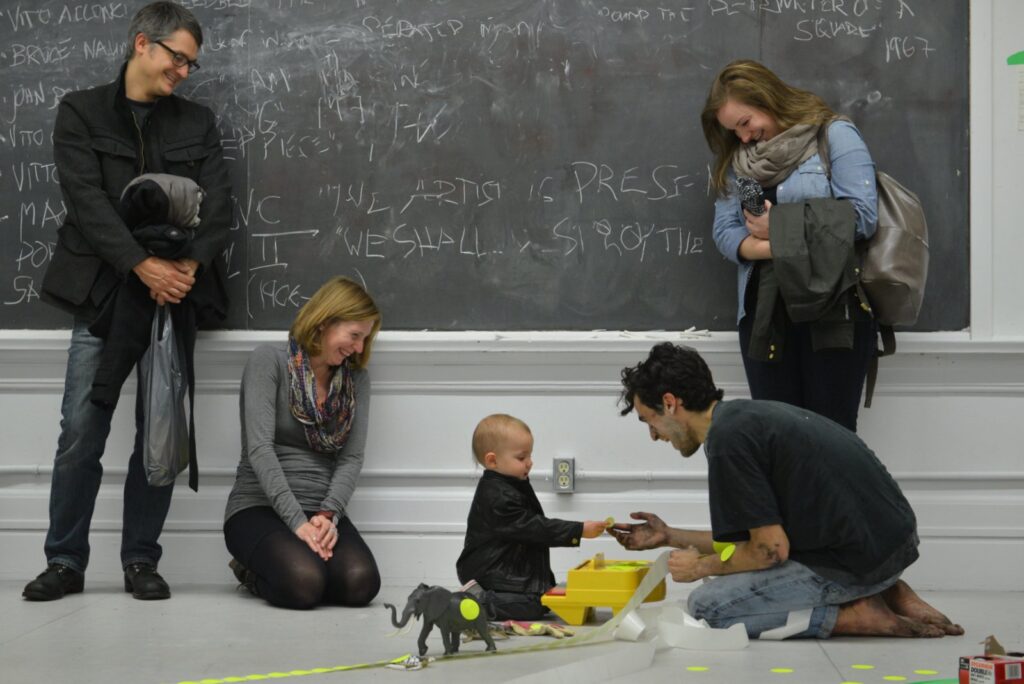
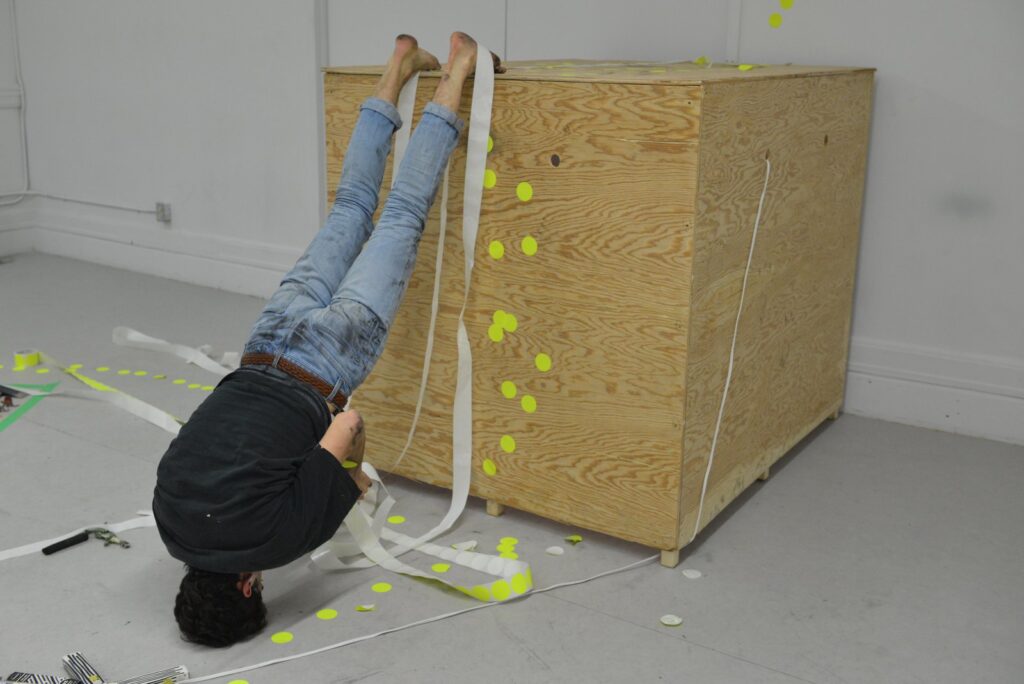
Making actions and moving, building and breaking down. Later, I look in and see that at some point Morelli has dismantled the box. Later still, I notice he has lined up all his objects around the perimeter of the room, in a marching line. Perfectly placed and spaced.
As we near 10 pm, the festival crowd gathers to watch Morelli draw his performance to a close. We find him in the place where he started: wiping off the blackboard and all its names with his face.
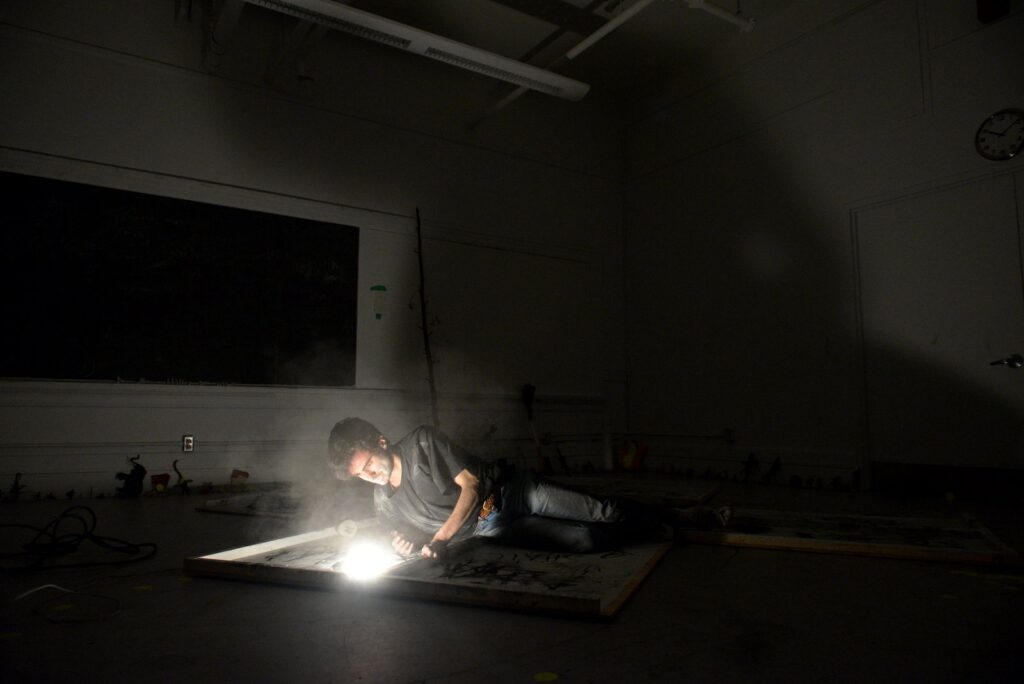
Climbing and taking action to remove this history, he obliterates it to dust using a mixture of love and aggression. He finishes, and switches the lights off. On hands and knees he scratches a piece of chalk against the floor. Manufacturing new chalk dust and back lit by a single bulb he gathers it up. Then, pausing for only a second, he blows it away.
